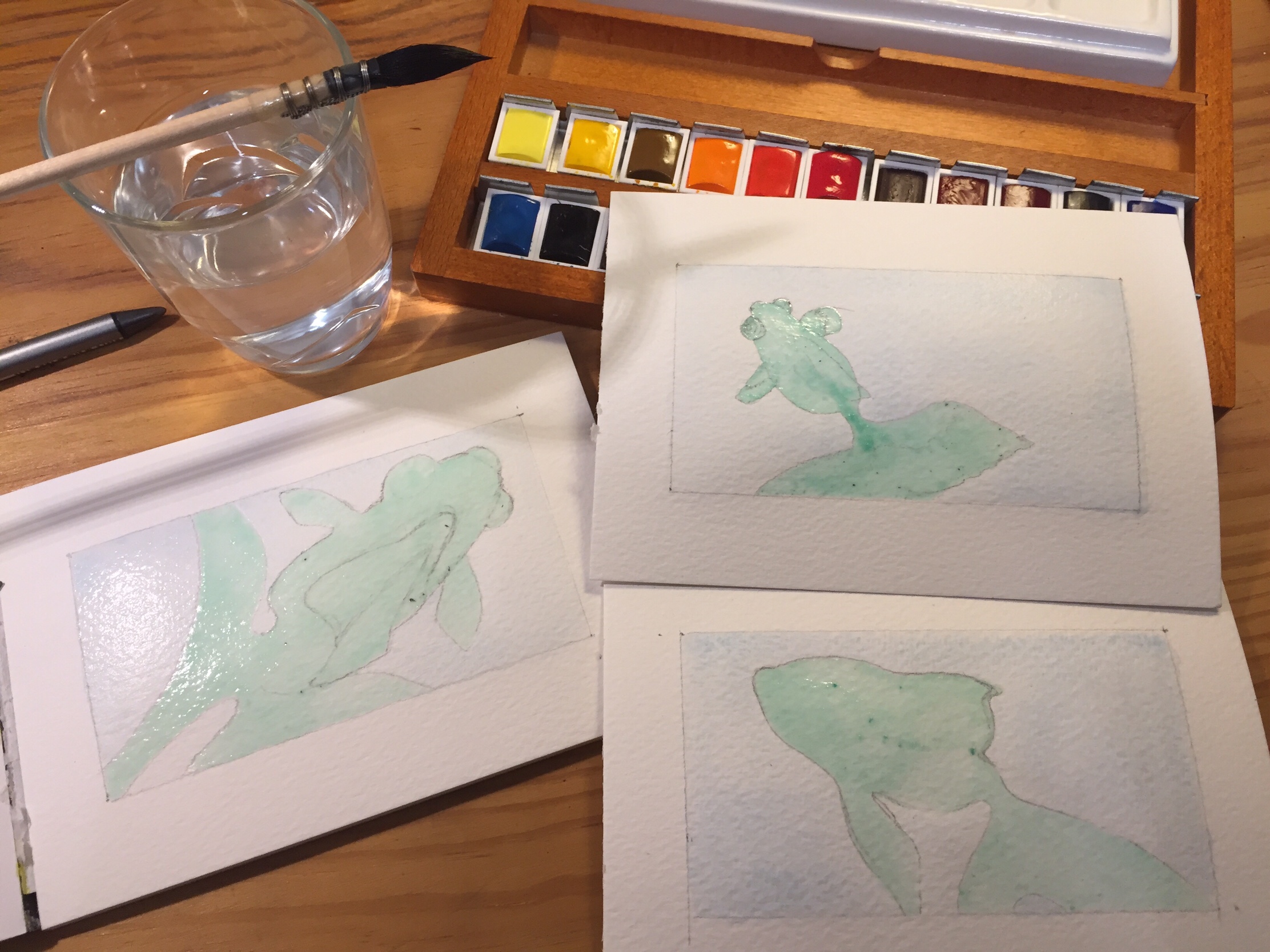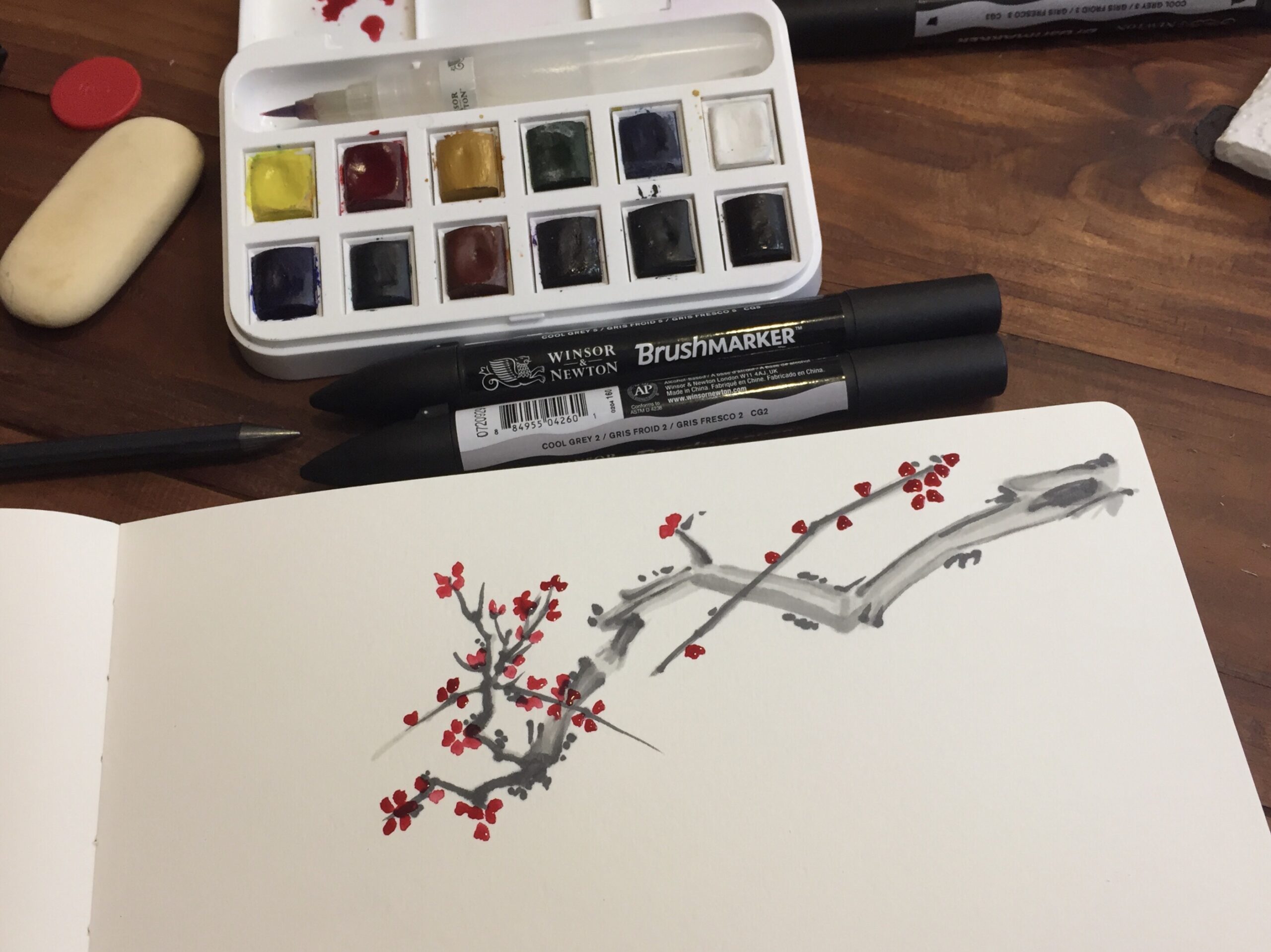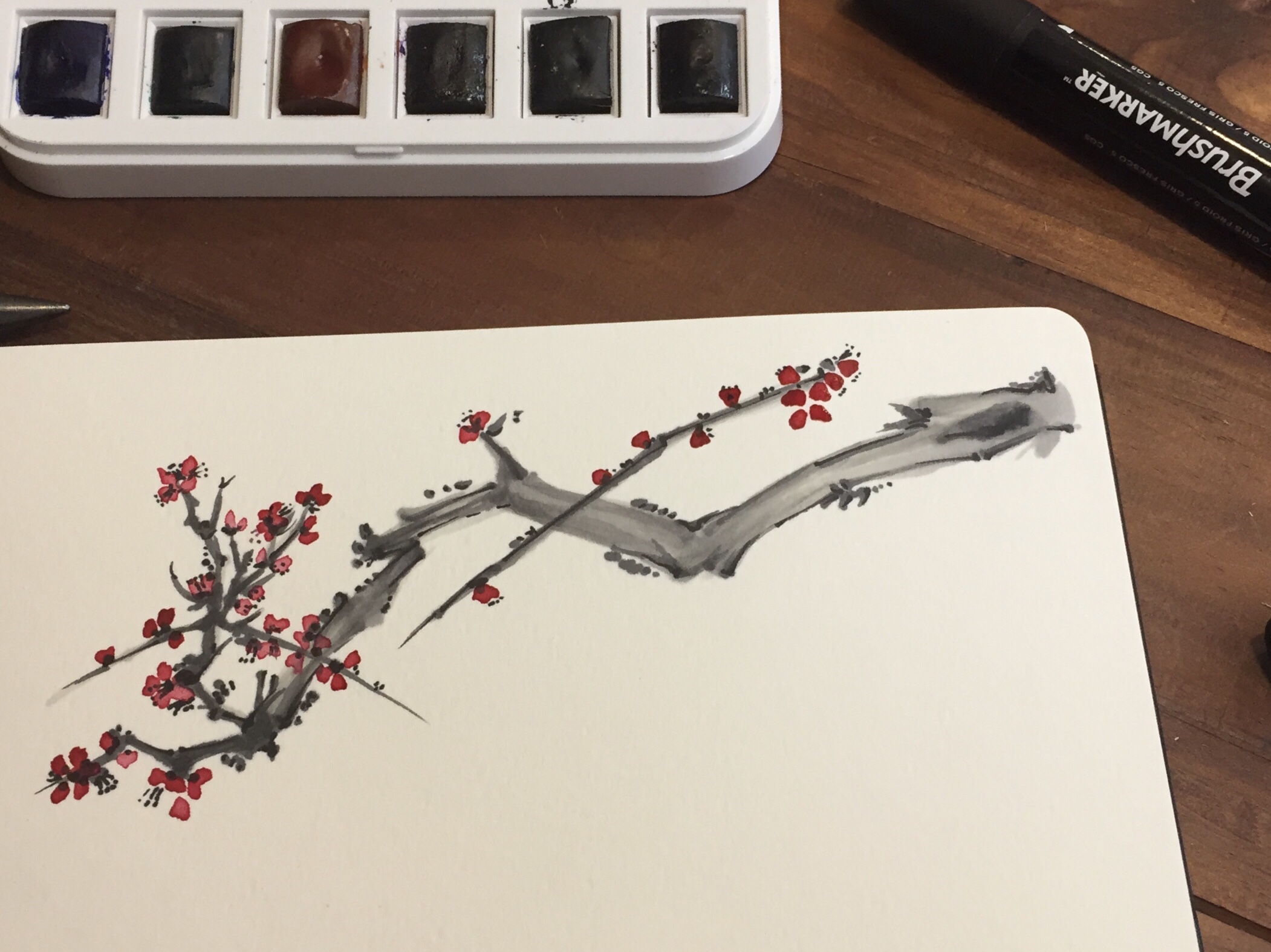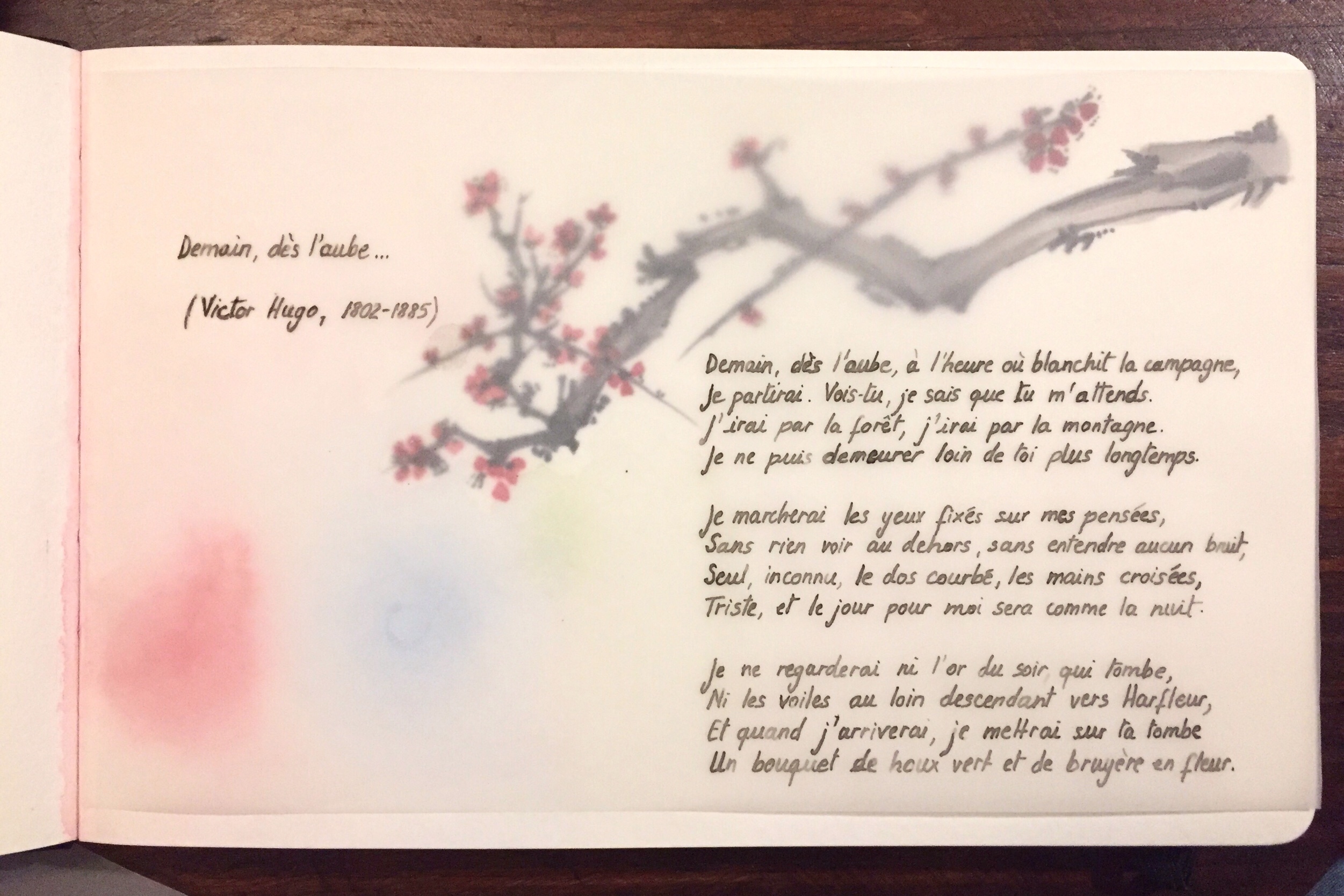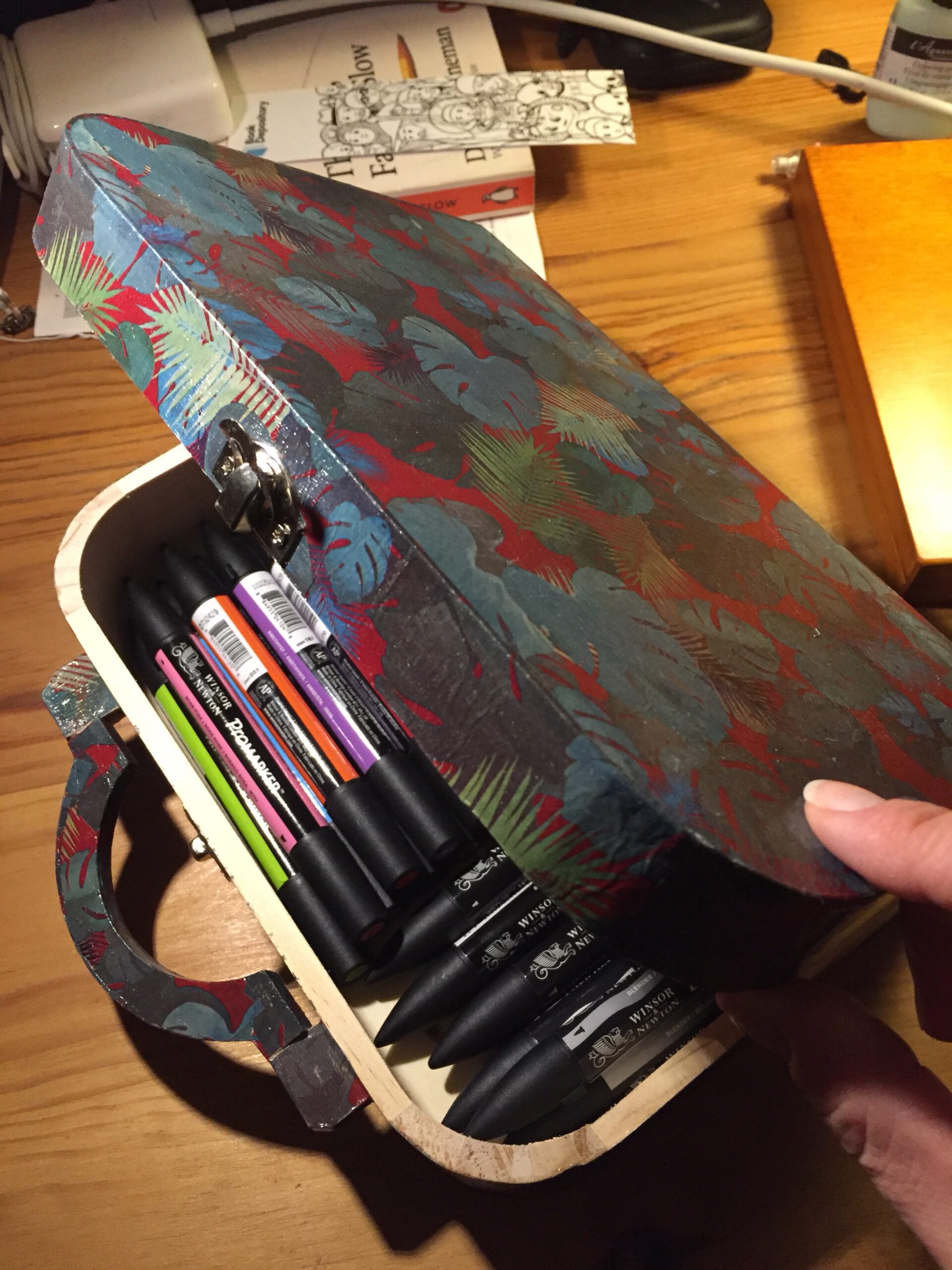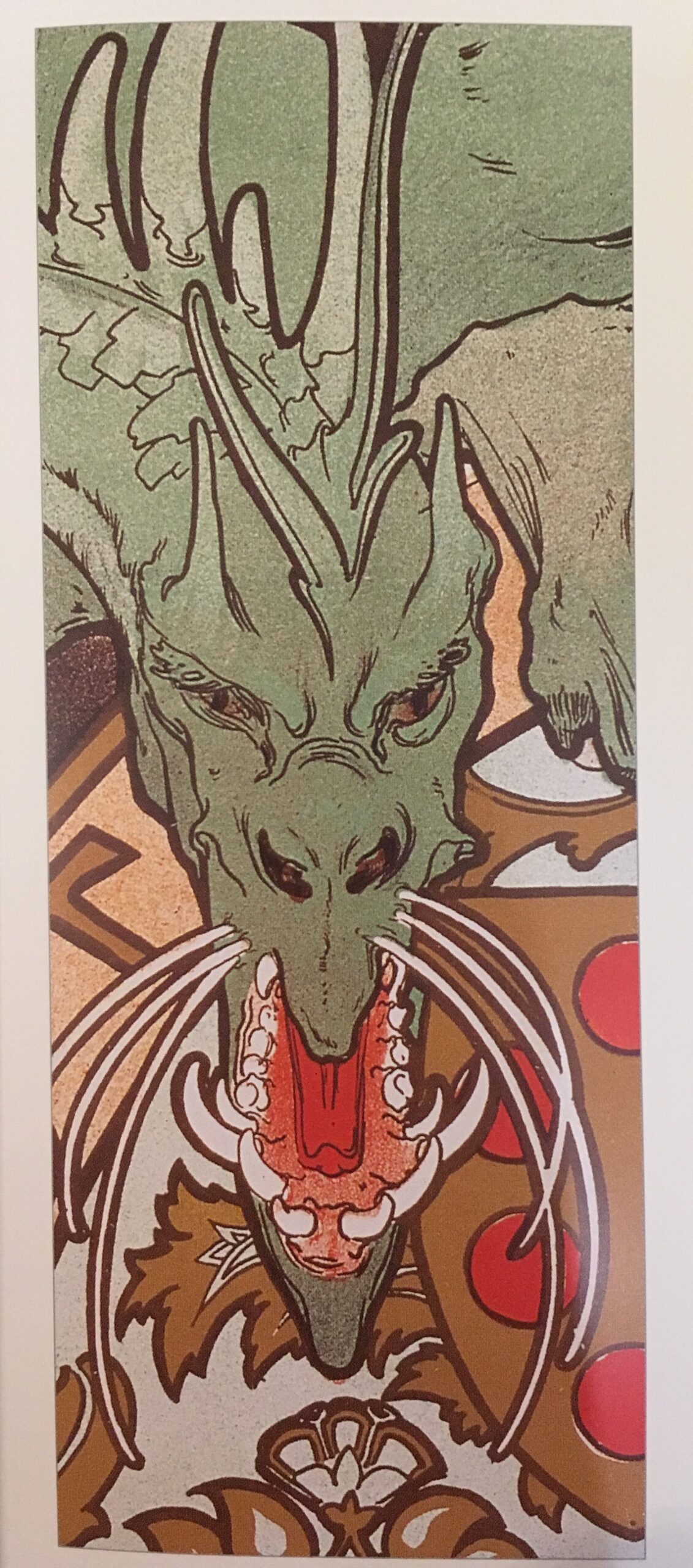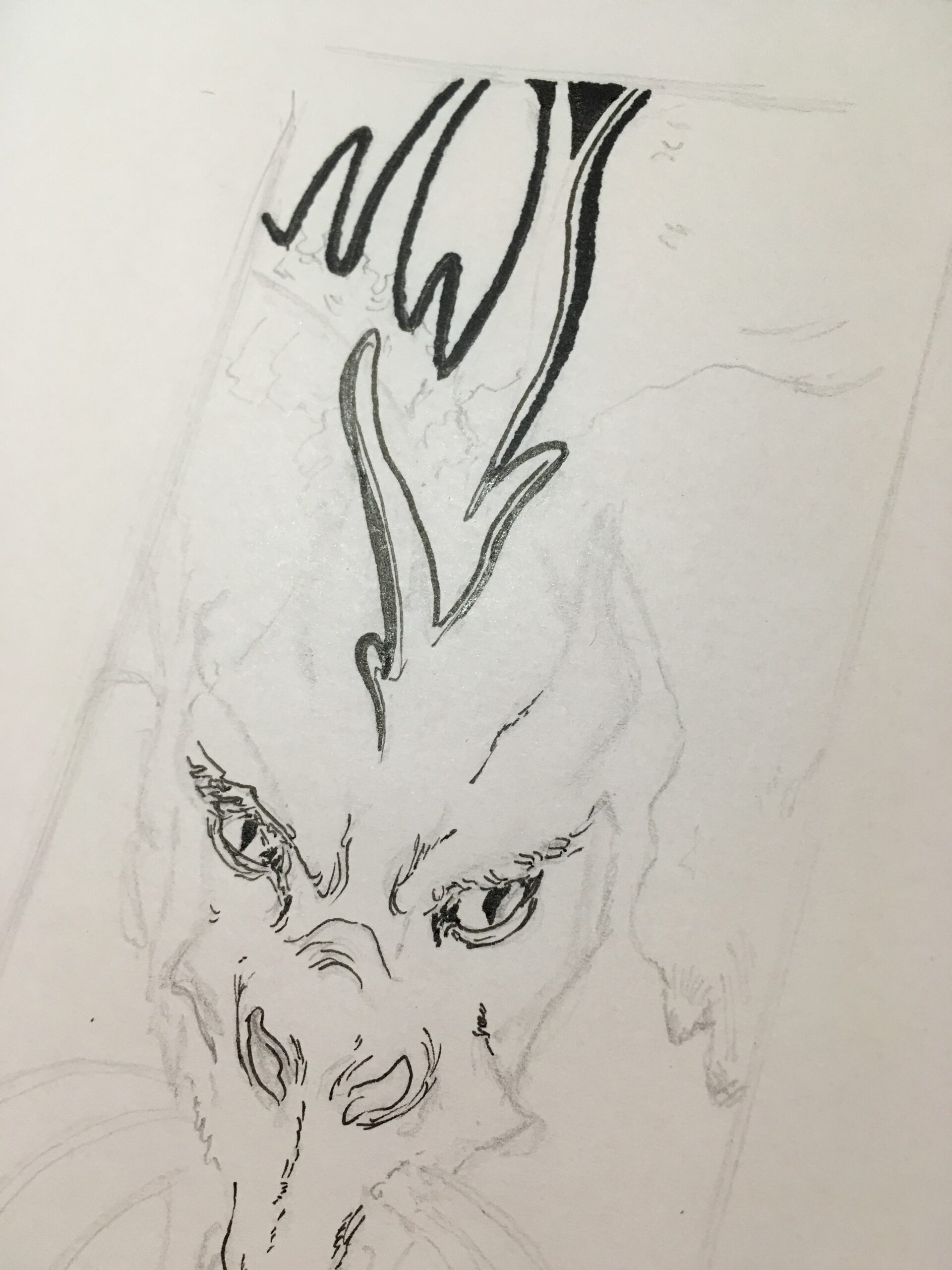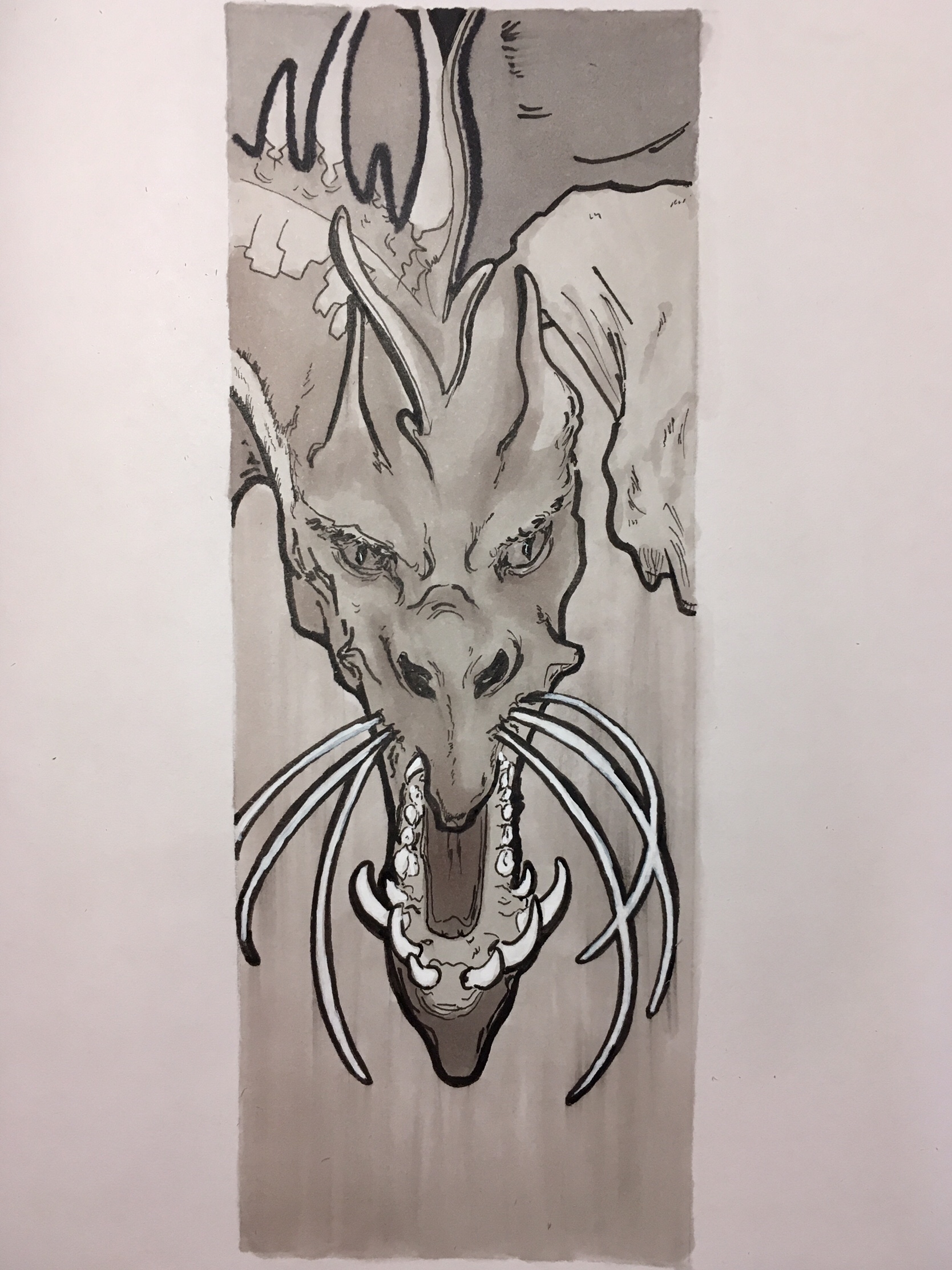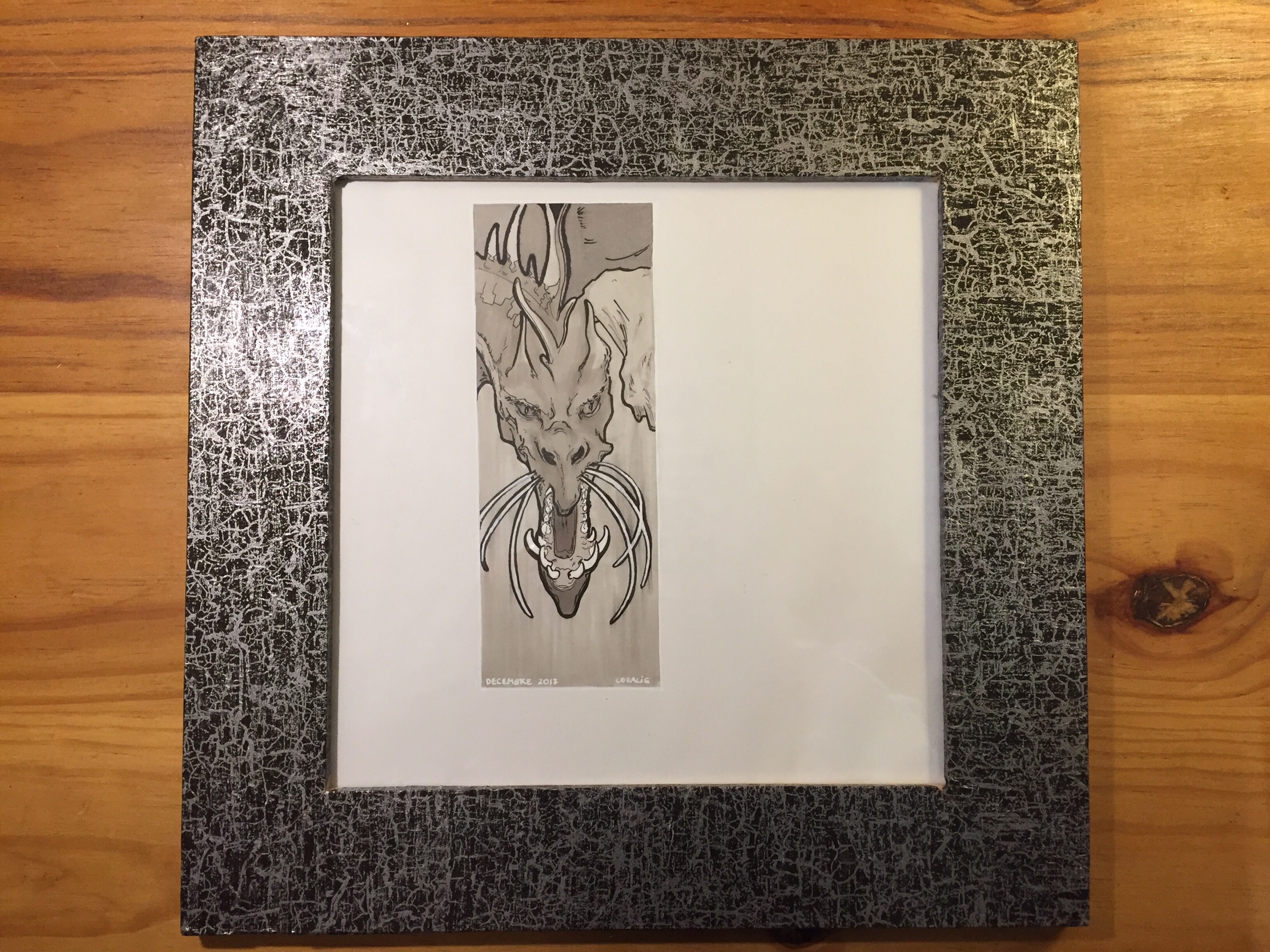All of these were done in a Moleskin watercolor book (21×13 cm), and are safely away from view.
I chose a YouTube video featuring a lovely Tuscany landscape and advertising it was very simple and ideal for beginners. The result isn’t entirely bad but it’s far from being good:
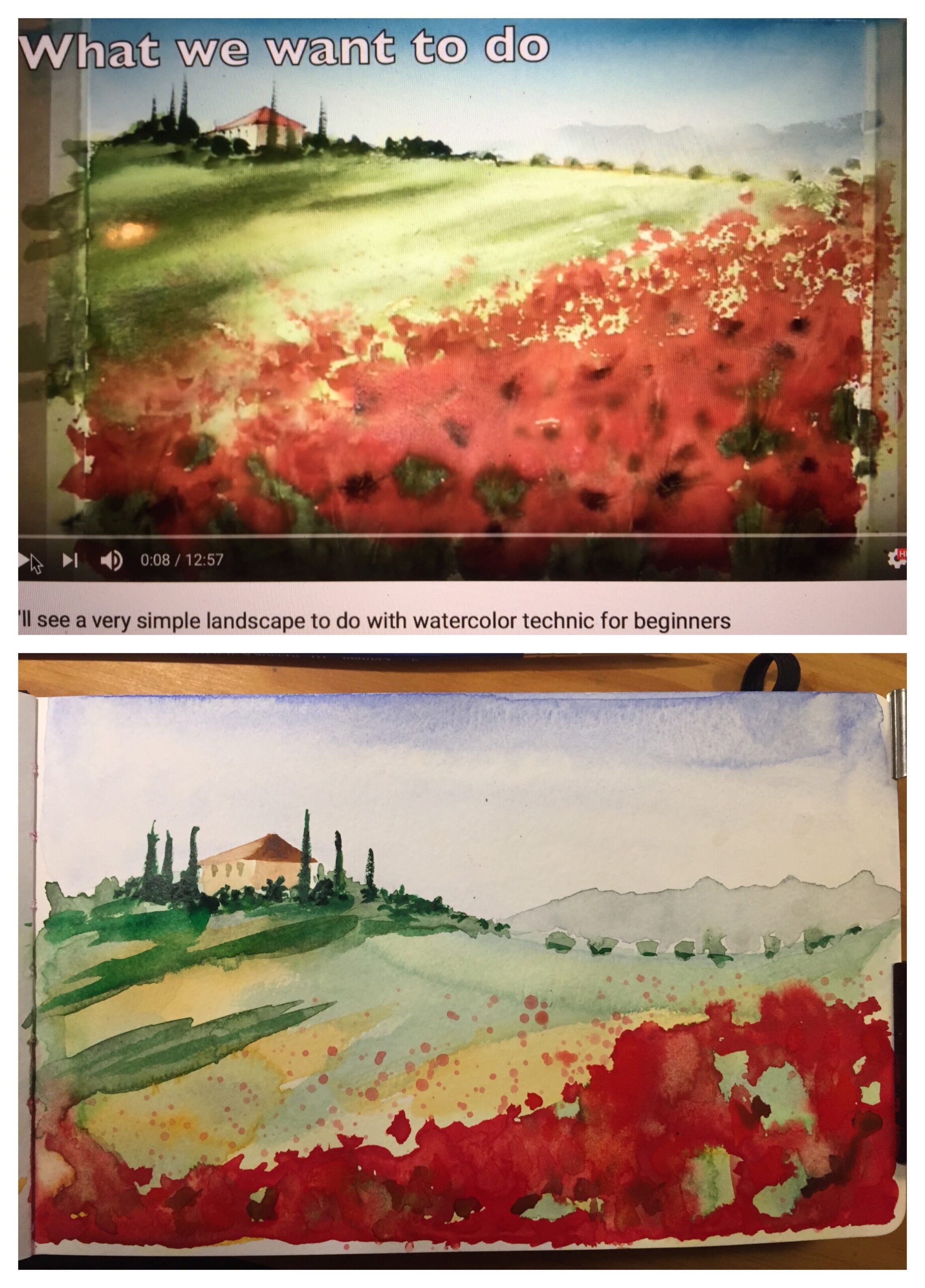
Following as best as I could the instructions in a “watercolor for beginners” manual, here is a winter field landscape, because I wanted to practice painting trees in particular and was intrigued by the splattering technique for the bluish snow (that you get by tapping your brush against your other hand close to where you want the projections to land):

From the same “watercolor for beginners” manual, I tried my hand on a woman doing laundry in the shade, interested by the technique of using a white pastel stick to draw the clothes lines. The only part I like is the foliage however.
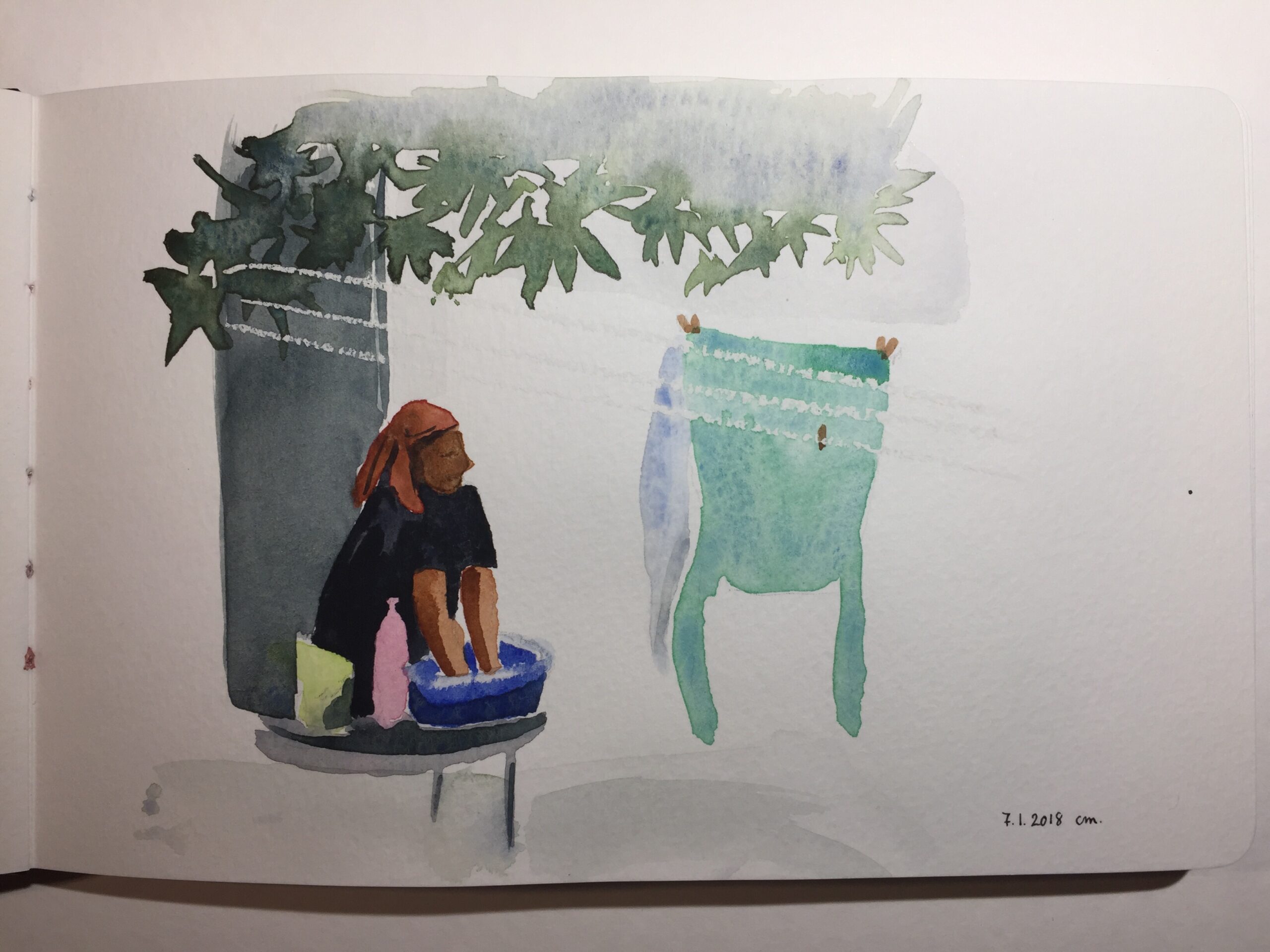
Here are a goldfish that looks part grumpy, part menacing, and a couple of delicate magnolia flowers:

And finally a lemon on a branch with leaves and their shadows:

